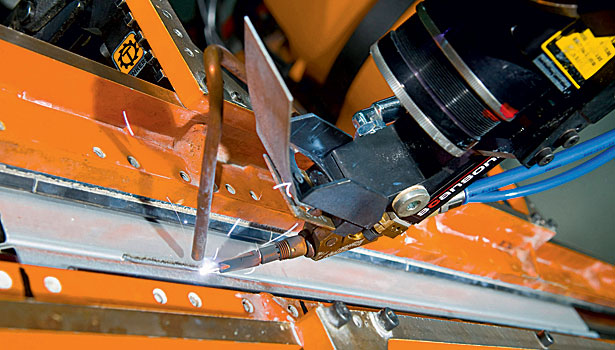Advances in laser keyhole welding and investigations into its accompanying difficulties are well documented in the literature.
Laser welding aluminium problems.
Laser beam welding can be used with crack sensitive materials such as the 6000 series of aluminum alloys when combined with an appropriate filler material such as 4032 or 4047 aluminum.
Low absorption rate of aluminum alloy to laser.
There are several different types of lasers that work well with aluminum and often the use of a cover gas is prudent.
The laser wavelength is 1 06 micrometers or less and a single 8 millisecond pulse is used.
In the past aluminum s high reflectivity was a problem for laser welding.
This form of cracking in aluminum is typically caused by a combination of metallurgical weaknesses of the weld metal as it solidifies with transverse stress applied across the weld.
Porosity is a less critical defect in laser welds than solidification cracking.
However with the evolution of high power good beam quality carbon dioxide co 2 lasers and the advent of high power high brightness solid state fiber delivered lasers coupling the energy into aluminum is no longer an issue.
Brittle intermetallics are found in the flash but the narrow fusion zone in the weld is.
Laser conduction welding lcw 10 6 w cm 2 is comparatively stable and may offer an alternative means of welding traditionally difficult materials such as aluminum alloys.
The laser induced plasma can influence the keyhole stability and thus the problem of keyhole porosity is more serious in co 2 laser welding than in yag and fiber laser welding.
In lbw of al li alloys the existence of the volatile element li increases the tendency of keyhole porosity which is caused by the violent vaporization of li.
The likelihood of laser welds to suffer solidification cracking can limit the welding speed parent material composition or weld penetration depth that is possible when laser welding both steels and aluminium.
Because of the high initial reflectivity of aluminum alloy to laser beam and its high thermal conductivity the absorption rate of aluminum alloy to laser beam before melting is very low.
This problem is mainly due to the problem of aluminum alloy material.
In this review the available research on the laser welding of 5xxx 6xxx and some 2xxx series automotive aluminium alloys is critically examined and interpreted from different perspectives.
A problem that can be easily encountered when aluminum welding is solidification cracking or the hot cracking problem.
Porosity in laser welds can be caused by plate.

